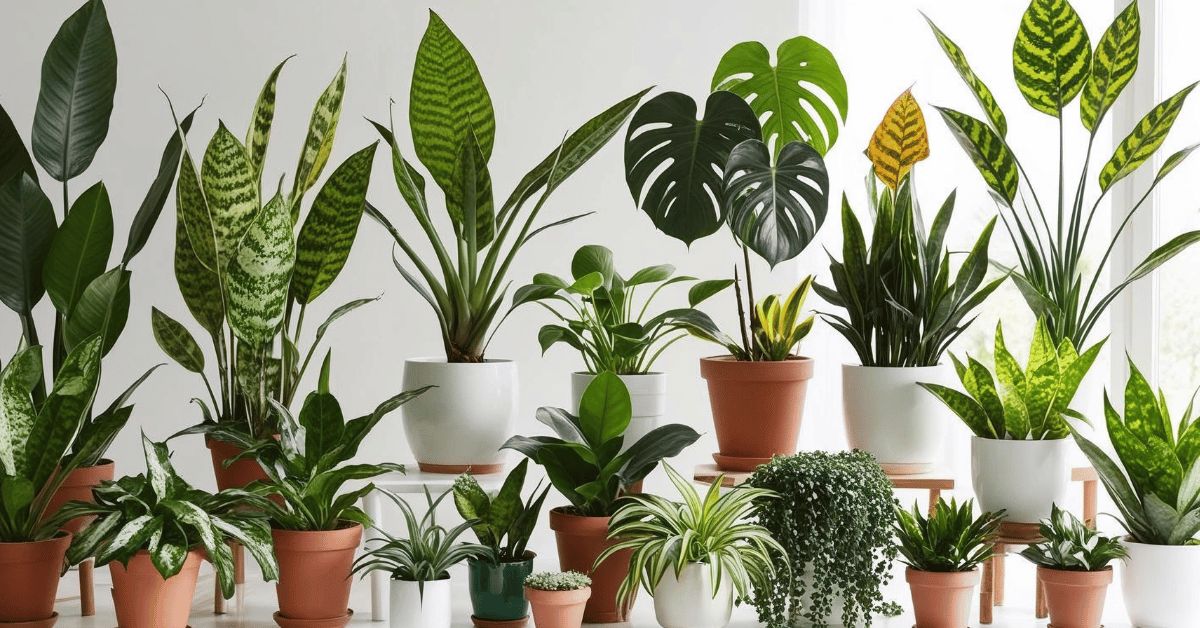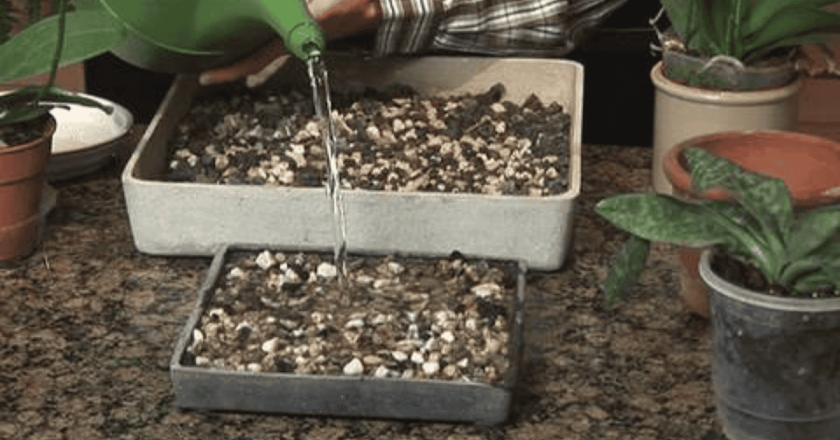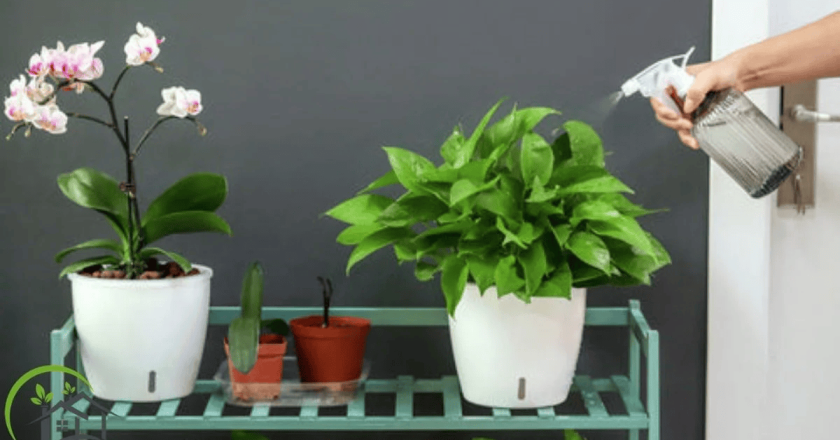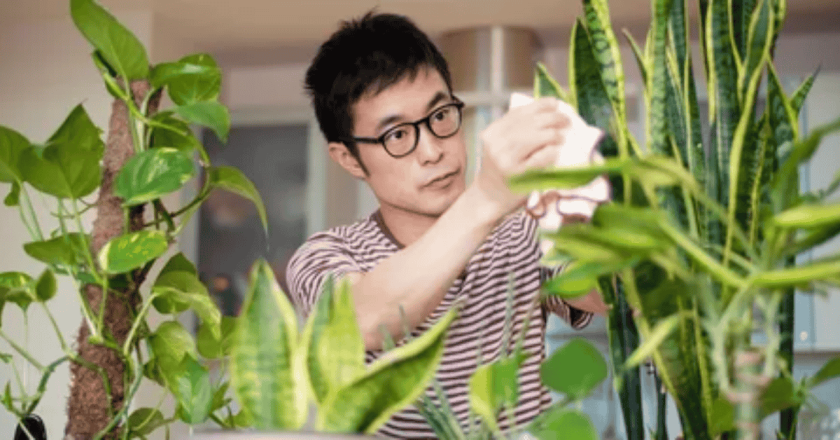With the arrival of spring, our routines often shift, drawing us outdoors to enjoy the longer days and pleasant weather. This seasonal change usually means we spend less time at home, making it easy to overlook specific home care tasks. Spring cleaning and maintenance become essential, not just for our living spaces but also for our houseplants. Fortunately, there’s a simple solution for those with packed schedules—low-maintenance houseplants.
“Low-maintenance houseplants are a fantastic choice because they thrive with minimal attention,” says Paris Lalicata, a plant expert at The Sill. “They’re ideal for busy plant parents, beginners, or even the so-called ‘lazy gardener.’ These resilient varieties remain beautiful and healthy even when neglected, offering a calming, stress-reducing presence without requiring intensive care.”
Once you understand the basic needs of these hardy plants, you can enjoy the benefits of greenery without much effort. Whether you’re a seasoned gardener or just starting your plant journey, you’ll find plenty of options at patchplants.org that suit your space and experience. These plants can typically handle being left alone for days or even weeks, making them perfect for frequent travellers or anyone with a busy lifestyle.
For more gardening inspiration:
- Garden Calendar 2025: Best Times to Plant Flowers & Veggies
- 23 Blooming Indoor Plants to Brighten Your Home This Winter
- Care Tips for Christmas Cactus That Blooms Every Year
- How to Care for a Money Tree, the Luckiest Indoor Plant
- 33 Best Plants for Your Bathroom to Add a Spa-Like Feel
- Snake Plant Care Guide | Sansevieria Tips for Indoors
- Top Drought-Resistant Plants for a Low-Water Garden
- Peace Lily Care Guide | Thriving Spathiphyllum Indoors
- Mosquito Repellent Plants: 10 Outdoor Herbs & Flowers
- How to Create a Colorful Garden for All Season
- Shade-Loving Plants for Outdoor Low-Light Garden Spaces
35 Low-Maintenance Plants That Will Thrive in Literally ANY Room
-
Appearance: This is a small, rounded cactus with a soft, fuzzy texture and no sharp spines, making it a pet—and child-friendly choice.
-
Light Requirements: Bright, full sun is essential for healthy growth.
-
Water Needs: Water every 2-3 weeks, allowing the soil to dry out completely between waterings.
-
Why It’s Great: Unlike its prickly cousins, this cactus won’t cause painful pokes, making it a perfect option for high-traffic areas or homes with curious little ones.
Bromeliad Vriesea Intenso Orange
-
Appearance: Known for its vibrant, flame-like central spike and glossy green leaves.
-
Light Requirements: Prefers indirect sunlight, making it suitable for bright rooms without direct sun exposure.
-
Water Needs: Fill the plant’s base with water once a week, and occasionally mist the leaves for added humidity.
-
Why It’s Great: This low-maintenance plant adds a bold pop of color to any space and is nontoxic, making it safe for pets and children.
Kalanchoe Flapjack
-
Appearance: Features thick, paddle-shaped leaves with a striking reddish tint along the edges, especially when exposed to direct sunlight.
-
Light Requirements: Thrives in direct sunlight, which enhances its beautiful red hues.
-
Water Needs: Water only when the soil is completely dry, as this succulent is drought-tolerant.
-
Why It’s Great: This plant’s unusual leaf shape adds texture and interest to any plant collection, and it’s tough enough to handle neglect.
Preserved Fern Kokedama
-
Appearance: A preserved real fern, carefully treated to retain its natural beauty and texture.
-
Light Requirements: Low light, as direct sunlight can cause fading.
-
Water Needs: No regular watering required, but misting can help maintain its appearance.
-
Why It’s Great: Offers the look and feel of a living plant without the maintenance, making it a hassle-free choice for busy plant lovers.
Boston Fern
-
Appearance: Lush, arching fronds with delicate, feathery leaves that create a classic, tropical vibe.
-
Light Requirements: Medium, indirect light and high humidity.
-
Water Needs: Mist daily and water thoroughly every 1-2 weeks to keep it looking fresh.
-
Why It’s Great: This fern thrives in humid environments, making it an excellent choice for bathrooms or kitchens.
Money Tree
-
Appearance: Features a braided trunk and glossy green leaves, symbolizing prosperity and good fortune.
-
Light Requirements: Bright, indirect light is ideal, but it can tolerate lower light levels.
-
Water Needs: Water when the top few inches of soil feel dry, typically every week or so.
-
Why It’s Great: Believed to bring good luck, this plant is also known for its resilience and adaptability, making it a popular choice for homes and offices.
String of Pearls
-
Appearance: Vining succulent with delicate, bead-like leaves that trail gracefully from hanging pots.
-
Light Requirements: Bright, indirect light for the best growth, though it can handle a bit of direct sun.
-
Water Needs: Water every 2 weeks, allowing the soil to dry out completely in between.
-
Why It’s Great: Its unique, cascading form makes it a beautiful choice for shelves or hanging baskets.
Aloe Vera
-
Appearance: Thick, spiky leaves filled with a soothing gel often used for minor burns and skin care.
-
Light Requirements: Bright, indirect light for optimal growth.
-
Water Needs: Water every 2-3 weeks when the soil is mostly dry.
-
Why It’s Great: Beyond its striking appearance, this plant offers practical benefits, including its famous healing properties.
Philodendron Micans
-
Appearance: Velvety, heart-shaped leaves with a subtle pinkish hue that add a touch of luxury to any space.
-
Light Requirements: Medium to bright, indirect light for healthy growth.
-
Water Needs: Water every 2 weeks when the top inch of soil is dry.
-
Why It’s Great: This plant’s trailing vines make it perfect for hanging baskets or high shelves, adding a lush, cascading effect.
String of Dolphins
-
Appearance: Small, curved leaves that look like tiny dolphins leaping from the stems.
-
Light Requirements: Bright, indirect light to maintain its unique shape.
-
Water Needs: Water every 2 weeks, allowing the soil to dry out completely.
-
Why It’s Great: Its playful, ocean-inspired appearance makes it a fun conversation piece for any plant collection.
Bird’s Nest Fern
-
Appearance: Glossy, wavy leaves that radiate from a central base, creating a nest-like form.
-
Light Requirements: Bright, indirect light with high humidity.
-
Water Needs: Water every 2 weeks when the soil is dry to the touch.
-
Why It’s Great: Unlike most ferns, this variety holds onto moisture well, making it less finicky and easier to care for.
Golden Pothos
-
Appearance: Glossy, heart-shaped leaves with vibrant green and yellow variegation.
-
Light Requirements: Can handle anything from low to bright, indirect light.
-
Water Needs: Water every 1-2 weeks, depending on humidity and light levels.
-
Why It’s Great: One of the most forgiving houseplants, it can survive low light and irregular watering, making it perfect for beginners.
Echeveria
-
Appearance: Compact, rosette-shaped succulent with thick, fleshy leaves that often have a hint of pink or red.
-
Light Requirements: Bright, indirect light is essential for vibrant color.
-
Water Needs: Rarely, only when the soil is completely dry.
-
Why It’s Great: Its compact size and stunning leaf colors make it a favorite for windowsills and small spaces.
ZZ Plant
-
Appearance: Shiny, dark green leaves that grow in an elegant, upright form.
-
Light Requirements: Low to bright, indirect light.
-
Water Needs: Water every 2-3 weeks, allowing the soil to dry out completely.
-
Why It’s Great: This nearly indestructible plant is perfect for those who occasionally forget to water their plants.
Raven ZZ Plant
-
Appearance: A striking variety of the ZZ plant with dark, almost black, glossy leaves.
-
Light Requirements: Low to bright, indirect light.
-
Water Needs: Water every 2-3 weeks, allowing the soil to dry out completely.
-
Why It’s Great: Just as hardy as the regular ZZ plant but with a more dramatic appearance, perfect for modern interiors.
Rubber Plant (Ficus elastica)
-
Appearance: Large, glossy leaves with a deep green or burgundy hue, depending on the variety.
-
Light Requirements: Bright, indirect light, but can adapt to lower light levels.
-
Water Needs: Every 1-2 weeks, letting the top few inches of soil dry out between waterings.
-
Why It’s Great: Known for its air-purifying qualities and striking, upright growth habit.
Parlor Palm (Chamaedorea elegans)
-
Appearance: Graceful, arching fronds that create a classic, tropical look.
-
Light Requirements: Low to medium, indirect light.
-
Water Needs: Every 1-2 weeks, with higher humidity preferred.
-
Why It’s Great: One of the easiest indoor palms to care for, and it’s pet-friendly.
Jade Plant (Crassula ovata)
-
Appearance: Thick, glossy leaves with a compact, tree-like structure.
-
Light Requirements: Bright, indirect light.
-
Water Needs: Every 2-3 weeks, allowing the soil to dry out completely.
-
Why It’s Great: Symbolizes good luck and prosperity, making it a popular choice for offices and homes.
Peace Lily (Spathiphyllum)
-
Appearance: Elegant, dark green leaves with striking white flowers.
-
Light Requirements: Low to medium, indirect light.
-
Water Needs: Weekly, or when the leaves start to droop.
-
Why It’s Great: Known for its air-purifying abilities and beautiful, long-lasting blooms.
Hoya Carnosa (Wax Plant)
-
Appearance: Thick, waxy leaves with trailing vines and star-shaped, fragrant flowers.
-
Light Requirements: Bright, indirect light.
-
Water Needs: Every 2-3 weeks, allowing the soil to dry out between waterings.
-
Why It’s Great: Long-lived and easy to propagate, making it a favorite for hanging planters.
Cast Iron Plant (Aspidistra elatior)
-
Appearance: Long, glossy, dark green leaves that stand upright.
-
Light Requirements: Low light.
-
Water Needs: Every 2-3 weeks.
-
Why It’s Great: Nearly indestructible, tolerating low light, irregular watering, and neglect.
String of Hearts (Ceropegia woodii)
-
Appearance: Delicate, trailing vines with heart-shaped leaves.
-
Light Requirements: Bright, indirect light.
-
Water Needs: Every 2-3 weeks, allowing the soil to dry out completely.
-
Why It’s Great: Unique, trailing habit and stunning variegated leaves.
Prayer Plant (Maranta leuconeura)
-
Appearance: Broad, patterned leaves that fold up at night like hands in prayer.
-
Light Requirements: Low to medium, indirect light.
-
Water Needs: Every 1-2 weeks, keeping the soil slightly moist.
-
Why It’s Great: Adds a pop of color and movement to your plant collection.
Dumb Cane (Dieffenbachia)
-
Appearance: Large, green leaves with striking white or cream variegation.
-
Light Requirements: Low to bright, indirect light.
-
Water Needs: Every 1-2 weeks, allowing the top inch of soil to dry out.
-
Why It’s Great: Fast-growing and resilient, though it should be kept away from pets due to its mildly toxic sap.
Chinese Evergreen (Aglaonema)
-
Appearance: Variegated leaves with striking shades of green, silver, pink, or red.
-
Light Requirements: Low to medium, indirect light.
-
Water Needs: Every 2-3 weeks, allowing the soil to dry out between waterings.
-
Why It’s Great: Extremely tolerant and comes in a wide variety of colors.
Fiddle Leaf Fig (Ficus lyrata)
-
Appearance: Large, leathery, violin-shaped leaves that make a bold statement.
-
Light Requirements: Bright, indirect light.
-
Water Needs: Every 1-2 weeks, allowing the soil to dry out slightly between waterings.
-
Why It’s Great: Known for its dramatic, architectural form and lush, green foliage.
Bamboo Palm (Chamaedorea seifrizii)
-
Appearance: Tall, feathery fronds with a tropical vibe.
-
Light Requirements: Low to bright, indirect light.
-
Water Needs: Every 1-2 weeks.
-
Why It’s Great: Effective at filtering indoor air and pet-friendly.
Dracaena Marginata (Dragon Tree)
-
Appearance: Long, spiky leaves with red edges and a slender, upright form.
-
Light Requirements: Bright, indirect light, but can tolerate lower light.
-
Water Needs: Every 2-3 weeks.
-
Why It’s Great: Adds height and a bold, modern look to any space.
Air Plants (Tillandsia)
-
Appearance: Unique, often curly leaves that don’t require soil to grow.
-
Light Requirements: Bright, indirect light.
-
Water Needs: Mist or soak weekly, allowing them to dry completely before returning to their display.
-
Why It’s Great: Highly versatile and can be displayed creatively, like mounted on driftwood or in glass terrariums.
English Ivy (Hedera helix)
-
Appearance: Trailing vines with small, lobed leaves, often variegated.
-
Light Requirements: Medium to bright, indirect light.
-
Water Needs: Every 1-2 weeks.
-
Why It’s Great: Fast-growing and excellent for hanging baskets or training along trellises.
Haworthia
-
Appearance: Small, spiky succulent with thick, fleshy leaves.
-
Light Requirements: Bright, indirect light.
-
Water Needs: Every 2-3 weeks, allowing the soil to dry out completely.
-
Why It’s Great: Perfect for small spaces like windowsills or office desks.
Lucky Bamboo (Dracaena sanderiana)
-
Appearance: Tall, slender stems with small, glossy leaves.
-
Light Requirements: Bright, indirect light, but can tolerate lower light.
-
Water Needs: Change water weekly or water regularly if planted in soil.
-
Why It’s Great: Said to bring good fortune and can be grown in water or soil.
Silver Satin Pothos (Scindapsus pictus)
-
Appearance: Trailing vines with heart-shaped leaves covered in silvery spots.
-
Light Requirements: Low to bright, indirect light.
-
Water Needs: Every 1-2 weeks.
-
Why It’s Great: A beautiful alternative to the traditional green pothos, with a bit more shimmer.
Corn Plant (Dracaena fragrans)
-
Appearance: Tall, cane-like stalks with broad, arching leaves that are often variegated with yellow or light green stripes.
-
Light Requirements: Low to bright, indirect light.
-
Water Needs: Every 2-3 weeks, allowing the top inch of soil to dry out between waterings.
-
Why It’s Great: Known for its air-purifying qualities and ability to tolerate lower light levels, making it ideal for offices and darker rooms.
Zebra Plant (Haworthiopsis fasciata)
-
Appearance: Small, compact succulent with dark green, spiky leaves covered in white, horizontal stripes.
-
Light Requirements: Bright, indirect light.
-
Water Needs: Every 2-3 weeks, allowing the soil to dry out completely.
-
Why It’s Great: This plant’s striking, striped appearance and compact size make it perfect for desks and small shelves, and it’s incredibly hardy.
How Often Should I Water My Low-Maintenance Plants?
Watering is one of the most critical aspects of plant care, even for low-maintenance varieties. However, the biggest mistake many plant owners make is overwatering, which can lead to root rot and other issues. Here’s a simple guide to help you get the balance right:
-
Check the Soil Moisture: Always stick your finger about an inch or two into the soil before watering. If the soil feels damp, hold off on watering for a few more days. If it’s dry, it’s time to water.
-
Seasonal Variations: Remember that plants tend to need more water during the warmer months when they’re actively growing and less during the cooler, dormant months. For example, succulents and cacti may only need watering once every 3-4 weeks in winter but might require weekly watering in summer.
-
Adjust for Indoor Humidity: If the air inside your home is particularly dry, you may need to water more frequently. Conversely, if you live in a humid climate, your plants may need less water.
-
Use the Weight Test: Another trick is to pick up the pot. If it feels light, the soil is likely dry. If it feels heavy, there’s still moisture in the soil.
-
Drainage Matters: Always use pots with drainage holes to prevent water from sitting at the bottom, which can lead to root rot. If your pot doesn’t have drainage, be extra cautious with how much water you add.
-
Signs of Overwatering: Yellowing leaves, a musty smell from the soil, or mushy stems are all signs of overwatering. If you notice these, reduce your watering schedule immediately.
-
Signs of Underwatering: Conversely, if your plant’s leaves are brown at the tips, curling, or crispy, it’s a sign it needs more water.
When Should I Repot My Houseplant?
Repotting is an essential part of houseplant care, as it allows your plant’s roots to spread and access fresh nutrients. Here’s when to consider giving your plant a new home:
-
Check for Root-Bound Plants: If your plant’s roots are growing through the drainage holes or are visibly circling the surface of the soil, it’s time for a bigger pot. This is known as being “root-bound,” and it can prevent the plant from absorbing enough water and nutrients.
-
Stunted Growth: If your plant hasn’t put out new leaves or has stopped growing altogether despite proper care, it may be root-bound or out of nutrients.
-
Frequent Drying Out: If the soil seems to dry out much faster than usual, the plant’s roots may have taken up all the available space, meaning the soil can’t hold enough moisture.
-
Top-Heavy Plants: If your plant keeps tipping over or looks unstable, it’s probably outgrown its current pot.
-
Fresh Nutrients: Even if your plant isn’t root bound, repotting every 1-2 years refreshes the soil, providing new nutrients that can boost growth and overall health.
-
Best Time to Repot: Spring or early summer, when most plants are actively growing, is the ideal time for repotting. This allows them to recover quickly.
How Do I Deal with Pests on My Plants?
Pests can be a real nuisance, even for hardy, low-maintenance plants. If you notice unwanted visitors, here’s how to handle them:
-
Isolation is Key: Immediately separate the affected plant from your other houseplants to prevent the infestation from spreading.
-
Inspect the Leaves and Stems: Look for tiny bugs, webbing, or sticky residue on the leaves and stems. Common indoor pests include spider mites, aphids, mealybugs, and scale.
-
Clean the Leaves: Use a damp cloth to gently wipe down each leaf. For plants with tougher leaves, you can even give them a gentle shower to knock off pests.
-
Natural Insecticides: Neem oil is a popular, natural insecticide that’s effective against many common houseplant pests. Mix a few drops of neem oil with water in a spray bottle and thoroughly coat the leaves, stems, and soil surface.
-
Repeat Treatments: Pests can be persistent, so repeat treatments every few days for at least two weeks to fully eradicate the infestation.
-
Consider Beneficial Insects: If you keep your plants outdoors in the warmer months, beneficial insects like ladybugs can help control pest populations naturally.
-
Prevention is Best: To reduce the risk of future infestations, regularly dust your plants, avoid overwatering, and inspect new plants before bringing them into your home.
Watering and Maintenance Table
| Plant Type | Light Requirements | Watering Frequency | Special Notes |
|---|---|---|---|
| Snake Plant | Low to bright, indirect light | Every 2-3 weeks | Very drought-tolerant, avoid overwatering |
| ZZ Plant | Low to bright, indirect light | Every 2-3 weeks | Tough and nearly indestructible |
| Pothos | Low to bright, indirect light | Every 1-2 weeks | Fast-growing, great for hanging pots |
| Aloe Vera | Bright, indirect light | Every 2-3 weeks | Known for its soothing gel |
| Rubber Plant | Bright, indirect light | Every 1-2 weeks | Large, glossy leaves; can grow tall |
| Peace Lily | Low to medium, indirect light | Weekly | Known for its white flowers and air-purifying properties |
| Bird’s Nest Fern | Bright, indirect light | Every 1-2 weeks | Prefers high humidity |
| String of Pearls | Bright, indirect light | Every 2-3 weeks | Unique, trailing succulent |
| Money Tree | Bright, indirect light | Weekly | Symbol of prosperity, easy to grow |
| Philodendron Micans | Medium to bright, indirect light | Every 2 weeks | Velvety, trailing leaves |
| Parlor Palm | Low to medium, indirect light | Every 1-2 weeks | Great for lower light rooms |
| Jade Plant | Bright, indirect light | Every 2-3 weeks | Long-lived and drought-tolerant |
| Dracaena | Low to bright, indirect light | Every 2-3 weeks | Tall, striking foliage |
| Hoya Carnosa | Bright, indirect light | Every 2-3 weeks | Waxy leaves, produces fragrant flowers |
| Echeveria | Bright, indirect light | Rarely, only when soil is dry | Compact, rosette-shaped succulent |
Key Takeaways
-
Overwatering is a Common Mistake: Most low-maintenance plants prefer their soil to dry out between waterings. Use the finger test or the pot weight method to check moisture levels.
-
Repot When Needed: Watch for signs like root-bound growth, stagnant development, or frequent drying out to know when to repot.
-
Light Requirements Vary: While many low-maintenance plants can tolerate lower light, they still thrive best with bright, indirect light.
-
Pest Prevention is Key: Regularly inspect your plants for pests and treat them promptly with natural solutions like neem oil.
-
Drainage is Essential: Use pots with drainage holes to prevent root rot, and avoid letting your plants sit in standing water.
Final Thought
Caring for low-maintenance plants doesn’t have to be a chore. It can be a rewarding and stress-free way to bring a bit of nature into your home. By understanding the basic needs of your plants—like light, water, and soil—you can create a thriving indoor garden without constant upkeep. Low-maintenance varieties like snake plants, ZZ plants, and pothos are perfect for busy plant parents or beginners, as they can tolerate a bit of neglect and adapt to various indoor conditions.
Additionally, these resilient plants offer more than just greenery. They help purify the air, reduce stress, and create a calming atmosphere, making your home a more pleasant. Whether you have a bright, sunlit space or a cosy corner with lower light, a low-maintenance plant is right for you.
FAQs About Low-Maintenance Plant Care
-
How often should I water my low-maintenance plants?
Most low-maintenance plants need watering every 2-3 weeks, but this can vary depending on the plant type, pot size, and environmental conditions. Always check the soil first. -
Do low-maintenance plants need fertilizer?
Yes, but typically only during the growing season (spring and summer). Use a balanced, diluted liquid fertilizer once a month for best results. -
Can low-maintenance plants survive in low light?
Many can, like the ZZ Plant, Snake Plant, and Parlor Palm, but they will grow more slowly than in brighter light. -
How can I prevent pests on my houseplants?
Regularly dust your plants, avoid overwatering, and use natural repellents like neem oil if pests appear. -
When should I repot my houseplant?
Every 1-2 years, or whenever you notice the roots are crowded, growth is stunted, or the soil dries out too quickly.




